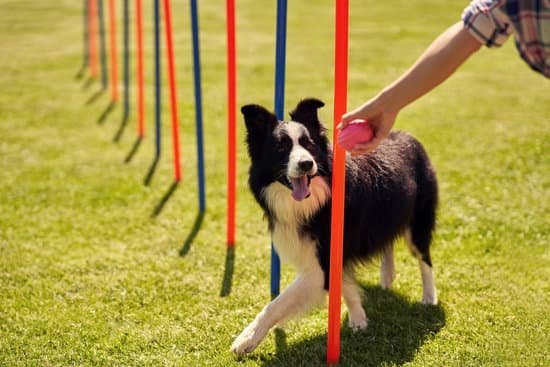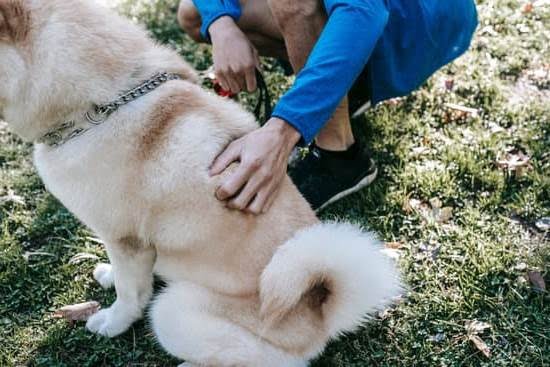Crate Training Toys For Dogs
There are a variety of different crate training toys for dogs on the market these days. Some are meant to be used as chew toys, while others are designed to keep your dog entertained while he or she is in the crate.
One of the most popular types of crate training toys is the Kong toy. Kongs are made of durable rubber and are designed to be filled with food or treats that your dog will be able to lick or chew out. This type of toy is great for keeping your dog entertained and engaged while he or she is in the crate.
Another popular type of crate training toy is the puzzle toy. Puzzle toys are typically made of plastic or rubber and are filled with treats or food. Your dog will have to figure out how to get the food out of the toy in order to eat it. This type of toy is a great way to keep your dog mentally stimulated while he or she is in the crate.
If you are looking for a chew toy to keep your dog occupied while he or she is in the crate, you may want to consider purchasing a Nylabone toy. Nylabones are made of tough rubber and are designed to withstand a lot of chewing. They come in a variety of different shapes and sizes, so you can find one that will fit your dog’s personality and chewing style.
If you are looking for a toy that will keep your dog entertained and engaged while he or she is in the crate, be sure to check out the crate training toys available on the market today. There is sure to be a toy that is perfect for your dog’s individual personality and chewing style.
How To Crate Train A Dog That Has Separation Anxiety
Separation anxiety is a very common issue for dogs, and can be very frustrating for owners. Dogs with separation anxiety often bark, whine, or chew when left alone. They may also have accidents in the house, or become destructive.
Fortunately, there are a few things that you can do to help your dog overcome separation anxiety. One of the most important is to crate train your dog.
The key to crate training a dog with separation anxiety is to make the crate a positive place. You should never use the crate as a punishment. Instead, make sure your dog sees the crate as a safe place where they can relax and feel secure.
Start by putting your dog’s food and water dishes in the crate, and then feeding them their meals inside the crate. Once your dog is comfortable eating inside the crate, start putting them in the crate for short periods of time, gradually increasing the length of time they are in the crate.
If your dog starts to become anxious or restless when left alone, give them a Kong toy filled with treats or peanut butter. This will help keep them occupied and calm.
crate training a dog with separation anxiety can be a challenge, but it is well worth the effort. With patience and perseverance, you can help your dog overcome their separation anxiety and lead a happy, healthy life.
How To Crate Train Your Dog With Separation Anxiety
Separation anxiety is a common problem among dogs. It can be caused by a variety of factors, such as a lack of socialization, anxiety caused by changes in the family dynamic (a new baby, pet, or family member), or prior traumatic events. Dogs with separation anxiety may become agitated and destructive when their owners leave them alone, and may even try to escape from the house or yard. Crate training can be a helpful tool in treating separation anxiety.
Crate training involves teaching your dog to view the crate as a safe and comforting place. When your dog is crate trained, you can leave her in the crate for short periods of time without having to worry about her becoming anxious or destructive.
Here are a few tips for crate training a dog with separation anxiety:
1. Start by gradually getting your dog used to being in the crate. Put her in the crate for a few minutes at a time and gradually increase the amount of time she spends in there.
2. Make the crate a comfortable place for your dog. Place a soft blanket or towel in the crate and give her a few toys to chew on.
3. Reward your dog for entering the crate and behaving calmly. Offer her a treat or a few minutes of playtime when she is quiet and relaxed in the crate.
4. Be patient and consistent with the crate training process. It may take a while for your dog to feel comfortable in the crate, but with patience and persistence, you can help her overcome her separation anxiety.
Crate Training For Dog
Owners
Crate training is a process by which a dog is taught to enter and remain in a crate or kennel. The crate is used as a place of confinement when the owner is unable to directly supervise the dog. Crate training is often used as a means of house training a dog, but can also be used to confine a dog when it is not possible to keep the dog under direct supervision.
The benefits of crate training are many. A crate can provide a sense of security and comfort for a dog, and can be a place of refuge in times of stress. A crate can also help to housetrain a dog, as the dog will learn that it is only acceptable to eliminate in designated areas. Crate training can also help to prevent destructive behavior, as the dog will learn that it is not acceptable to chew on furniture or other objects when left unsupervised.
The process of crate training begins by introducing the dog to the crate. The crate should be placed in a quiet, comfortable spot in the home and should not be used as a punishment tool. The dog should be allowed to explore the crate at its leisure, and should not be forced to enter. The door of the crate should be left open at all times, and the dog should be allowed to come and go as it pleases.
Once the dog is comfortable with the crate, the owner can begin to use it as a place of confinement. The dog should be given a designated area in the crate in which to eliminate, and should be taken outside regularly to eliminate. The dog should also be given plenty of toys and chew bones to keep it occupied while in the crate.
The owner should never use the crate as a place of punishment, and should always provide the dog with plenty of water and fresh air. The crate should never be used to isolate the dog from the family, and the dog should always be allowed to come and go as it pleases.
Is It Ever Too Late To Crate Train Your Dog
?
One of the most common questions we are asked as dog trainers is, “Is it ever too late to crate train my dog?” The answer is a resounding, “No!” Crate training is a great way to train your dog and can be used with puppies and adult dogs alike.
The first step in crate training is to get your dog comfortable with the crate. You can do this by placing the crate in a quiet, comfortable spot in your home and feeding your dog his meals inside the crate. Once your dog is comfortable eating inside the crate, you can start to close the door while he is eating. Gradually, increase the amount of time your dog spends in the crate and begin to use the crate for short periods of time when you are not able to keep an eye on him.
The key to successful crate training is to make sure your dog is comfortable and happy in his crate. If your dog is whining or barking in the crate, he is not comfortable and you need to work on making him more comfortable. You can do this by feeding him in the crate, putting a soft bed in the crate, and giving him plenty of exercise.
Crate training is a great way to train your dog and can be used with puppies and adult dogs alike. If you are crate training your dog for the first time, be sure to take it slow and be patient. With a little patience and some basic training, you and your dog can enjoy the benefits of crate training.

Welcome to the blog! I am a professional dog trainer and have been working with dogs for many years. In this blog, I will be discussing various topics related to dog training, including tips, tricks, and advice. I hope you find this information helpful and informative. Thanks for reading!





